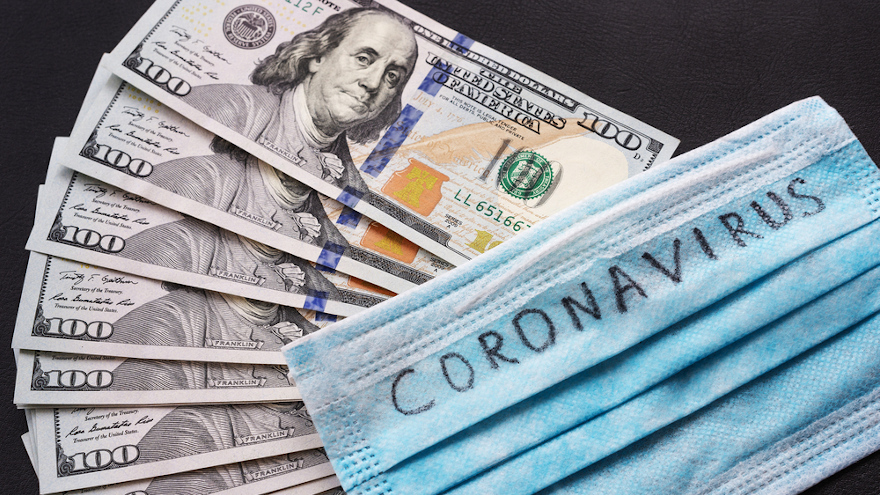Experts cautious over potential turbulent sales environment ahead

A little more than a week remains for your dealership to meet its monthly sales targets or your finance company to push toward portfolio growth objectives for July.
Currently, deliveries are being completed and contracts are being bought at decent clips, especially considering how much the coronavirus pandemic has thrown grit into the industry gears since March.
But experts are cautious about the second half of the year in a marketplace that as of June 23 had roughly 7.5% of all outstanding auto finance contracts receiving some sort of accommodation designed to assist financially troubled consumers, according to data from Equifax.
Comerica Bank chief economist Robert Dye put it this way in a recent Economic Alert: "Even though U.S data improved through June, there is significant risk of weaker performance in the second half of this year depending on the path of the coronavirus pandemic.”
Some individuals are beginning the second half of this unforgettable year trying to recapture their financial footing. Along with the modifications to auto financing, Equifax reported that 8.7% of mortgages, 6% of home equity loans and 2.7% of credit cards have been adjusted by providers.
Further, Equifax pointed out that less than 1% of outstanding auto-finance contracts had any such adjustments early in 2020 before the pandemic-triggered economic fallout arrived.
At least part of the reason for all of those modifications is job losses. According to data from the U.S. Department of Labor, there have been 18 consecutive weeks of initial unemployment insurance claims above 1 million, including spikes of 6.9 million on March 28 and 6.6 million on April 4.
With the number of COVID-19 cases still climbing nationally at a “dramatic” rate, S&P Global Economics acknowledged that uncertainty for the U.S. economy is elevated again. Analysts said high-frequency real-time economic data — which first hinted at a start of normalization in May — now suggests that the recovery may be losing steam.
“While it may be premature to sound the alarm for an even worse outcome, the recovery is facing increased challenges with the spread of COVID-19. This is all while government stimulus measures are set to expire,” S&P Global Economics experts said on Thursday.
The firm now thinks the probability of an even worse economic outcome is 30% to 35%, up from 25% to 30%.
“Although our base case is for a gradual recovery through next year, the surge in COVID-19 and hospitalizations has raised concerns that a more likely scenario is that the COVID-19 recession has not bottomed out,” S&P Global Economics experts added.
Federal lawmakers returned to Capitol Hill this week to craft what many experts expect to be another round of assistance. They certainly appear to be needed since unemployment insurance enhanced by the federal government through the CARES Act is set to expire this month. There’s little doubt that the extra $600 per week individuals are collecting via unemployment insurance might have kept some retail installment contracts current or gave some individuals the gumption and resources to make a purchase.
U.S. Senate Majority Leader Mitch McConnell appears to want more assistance based on what he said Tuesday when appearing on the chamber floor.
“The ingenuity and spirit of America’s small businesses is impossible to overstate. But they still face a tough road. With the majority of businesses expected to exhaust their initial Paycheck Protection Funding this summer, we’ll also be proposing a targeted second round of the PPP with a special eye toward hard-hit businesses,” McConnell said.
“And speaking of building on what worked in the CARES Act, we want another round of direct payments to help American families keep driving our national comeback,” he continued.
S&P Global Economics indicated the U.S. economy faces a “fiscal cliff” at the end of the month since many CARES Act stimulus programs — including those extended unemployment benefits for millions of workers — are set to expire.
“We believe that if they are allowed to lapse, the impact would likely be severe with lasting scars,” the firm said. “Indeed, according to testimony (on Friday) by former Federal Reserve chairs Janet Yellen and Ben Bernanke, the U.S. could face deep, permanent economic damage without more than $1 trillion in further stimulus.”
S&P Global Economics noted that one recent proposal had lawmakers cutting those individual weekly unemployment benefits to $400. Assuming about 20 million beneficiaries, that firm calculated that would mean a $36 billion income decline for August and September.
Holding all other factors constant and assuming the lost money would be spent, S&P Global Economics calculated that third-quarter growth would be 18% (annualized) instead of 22%, which was its forecast compiled in June.
“While not factored into our analysis, this lost spending would mean further job losses, making the overall impact on the economy even worse. And with federal moratoriums on government-backed loans and on tenant evictions from FHA-secured properties also set to expire, the impact would only snowball,” S&P Global Economics experts said.
And many dealerships, finance companies and other automotive service providers benefitted from the Paycheck Protection Program, which is also set to expire; “leaving many small businesses struggling to survive a second round of business closures,” according to S&P Global Economics.
Experts went on to say, “This is happening while state and local government budgets are severely depleted, leaving their own policy hands tied in the midst of the new COVID-19 assault.
“Federal government actions to both contain the virus and extend stimulus programs until private demand has sufficiently recovered are key in avoiding another downturn. But the clock is ticking,” S&P Global Economics concluded.

 View The Latest Edition
View The Latest Edition

